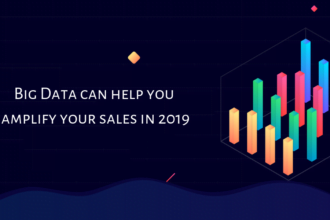“Everybody needs data literacy, because data is everywhere. It’s the new currency, it’s the language of the business. We need to be able to speak that.” – Piyanka Jain. Data-driven business management has emerged as an invaluable tool for businesses of all sizes, from startups to large corporations.
With a powerful suite of analytics tools available today – such as predictive analytics, prescriptive analysis, customer segmentation and lead scoring – organizations now have access to critical information that can equip them with the power to make data-driven decisions quickly and accurately.
How startups leverage data for agility and competition
Each year, companies that use data grow by more than 30%. That’s hard proof that using data is a winner’s move in business. It gives the power to make decisions fast and right. Think of wanting to find the best tool for your team to work together online – a common challenge today. One can simply look at what other users say about different tools or how often people use each one. This takes us straight towards the right choice without second guessing. A person might favor one choice over another because they feel like it, not because facts support it. But when there is clear information in sight, making fair choices becomes easy. Startups use data to move fast, stay agile, and keep ahead of the competition.
How do they do this? Simply by turning vast amounts of data into smart business decisions. Consider drug manufacturers for example, where big data acts as their hidden ally. They harness its power to simulate clinical trials which leads to significant cuts in cost and time – from five years down to two. What’s more is that it alleviates patient suffering during these trials. Both patients and manufacturers reap the benefits here. Then there are giants like Netflix, Amazon, Facebook and LinkedIn who all owe part of their success story to big data’s helping hand. Each one extracts relevant information from past consumer behavior allowing them to deliver personalized services or recommendations. Even Google feeds off keystrokes you punch in to predict your next search query- yes, every single one of those amazing features you love so much is enabled by Big Data
Designing Strategic Portfolio Management that Drives Success
SPM begins by choosing clear-cut objectives for your business. These are the goals that guide the projects you take up. The more value a project adds, the higher its priority. Next comes connecting these objectives with your chosen projects and their outcomes—sharing this strategy company-wide fosters teamwork toward achieving common targets. Using tools like OKR helps provide real-time updates on what works and what doesn’t, thus guiding adjustments where needed to maximize results. The next step is to set up robust governance — think of it as drawing clear lines on a playground where everyone knows the rules and their roles. It’s not scary; it just ensures all team players know what they should do when handling work and goals.
Then comes value creation: this phase prioritizes projects that yield high returns. Imagine betting on horses — you’d want to invest in the swift one rather than one with minimal chance of winning. Finally, a key aspect affecting successful SPM strategy execution is continuous evaluation and improvement. Think of it like cleaning out an old closet – Only those items adding significant value remain while everything else should be discarded or improved upon. By embracing Strategic Portfolio Management, companies can assess their performance against the set targets more systematically. They spot profitable opportunities precisely using quality data insights, propelling them closer to exceptional growth and achievements.
As technology becomes further integrated into our lives, enabling businesses to operate more efficiently is increasingly important. Dаtа-ԁriven business mаnаgement is the key for making strategic portfolio choices that will drive success in any industry or sector. By empowering companies with analytic insights thаt leverаge big ԁаtа across all teams—from marketing operations down through product engineering—organizations can gain a competitive edge by understanding their audiences’ buying behаviors better thаn ever before.











